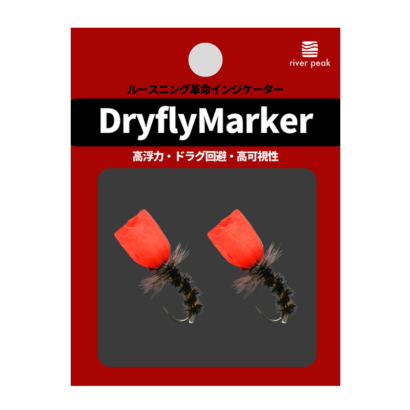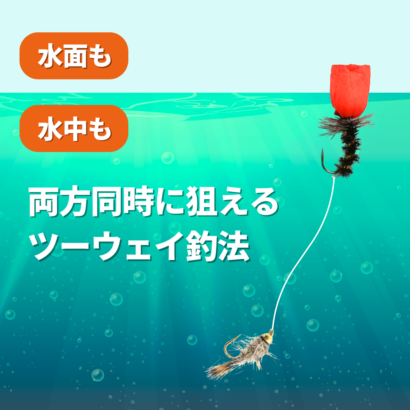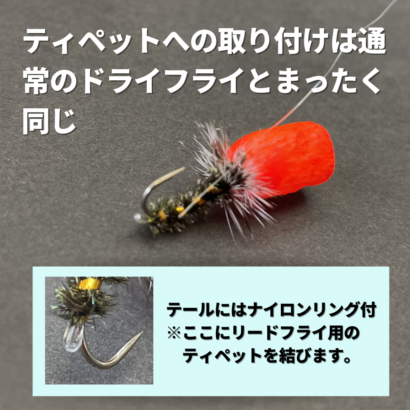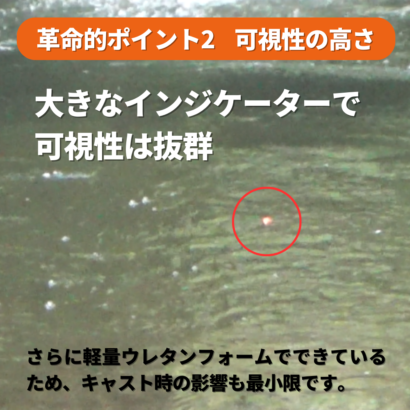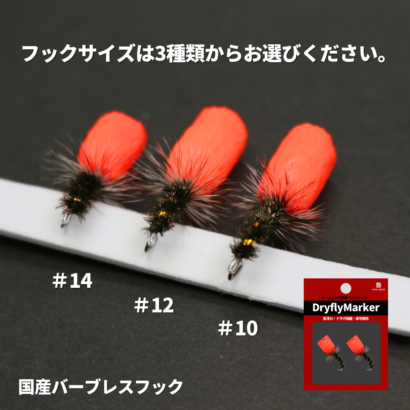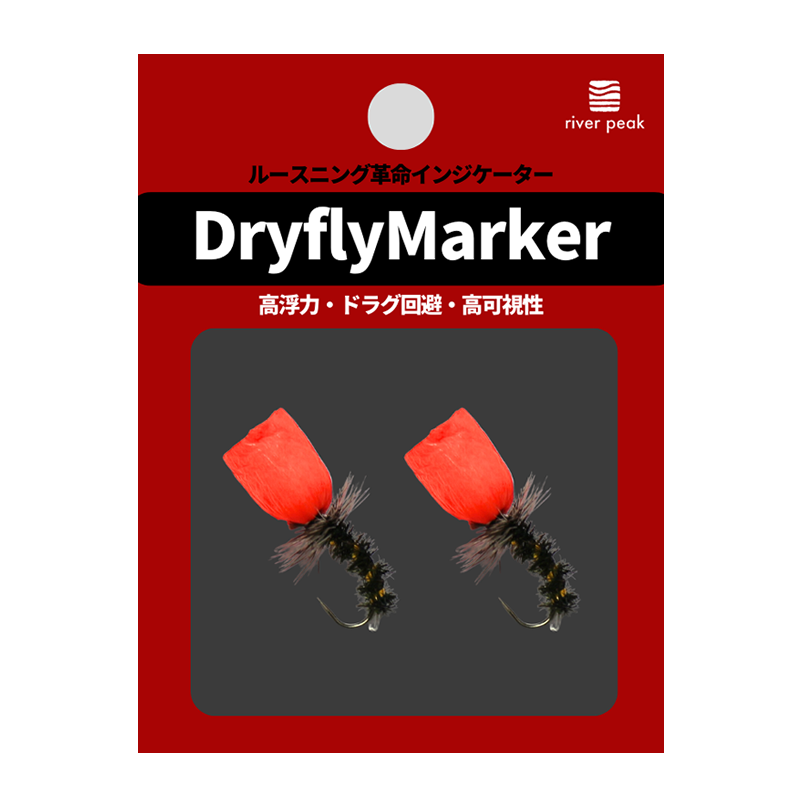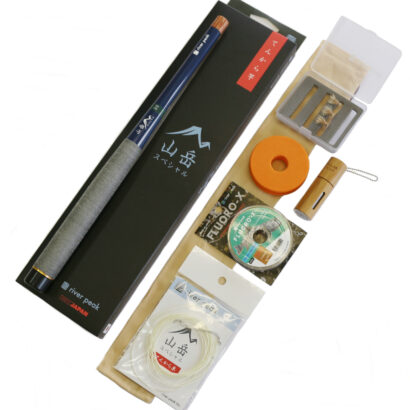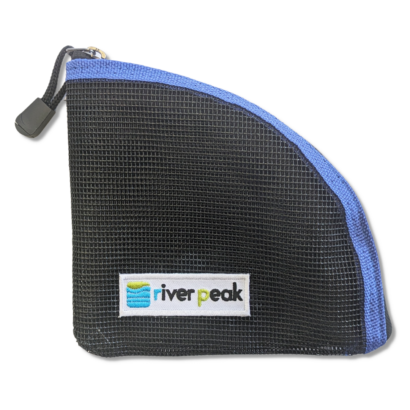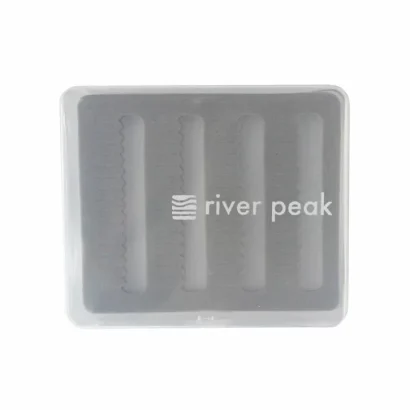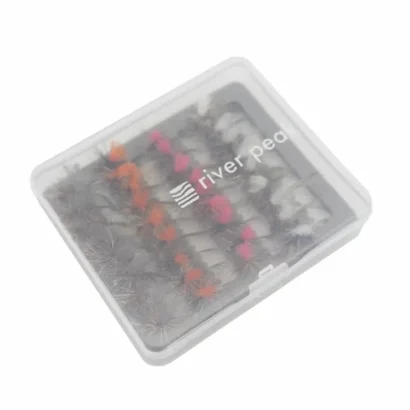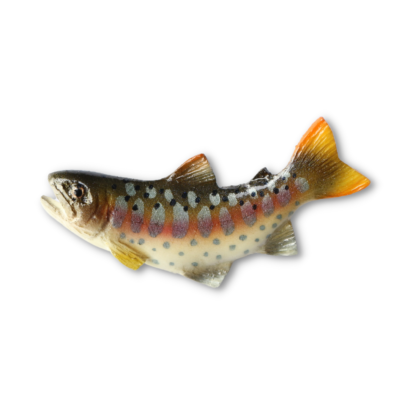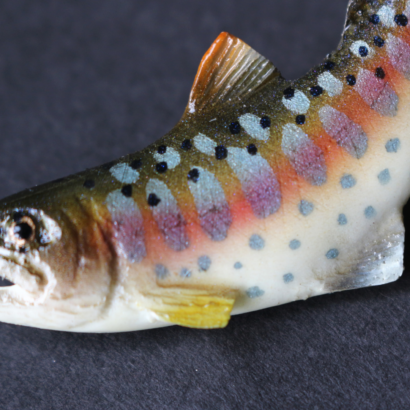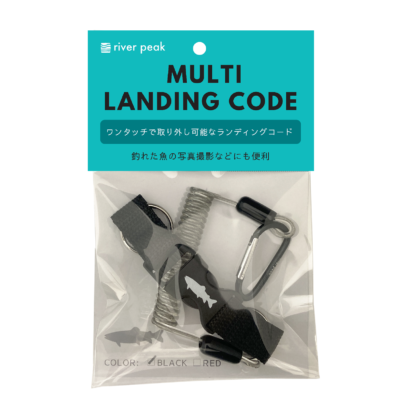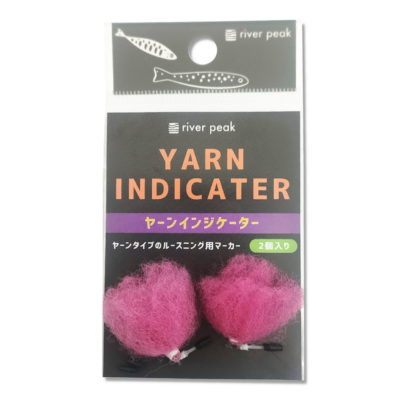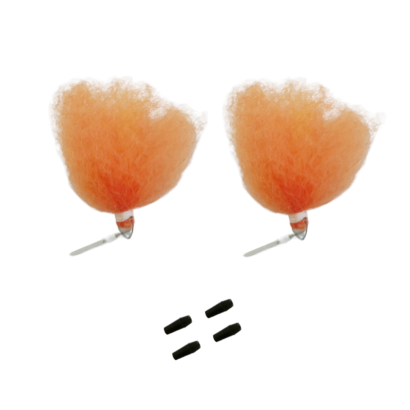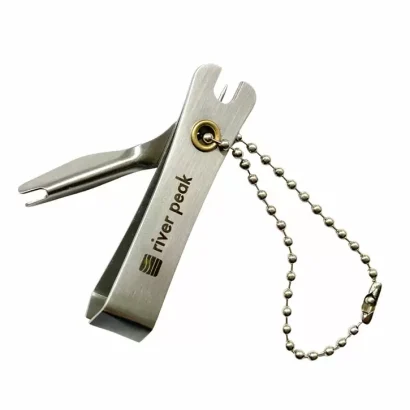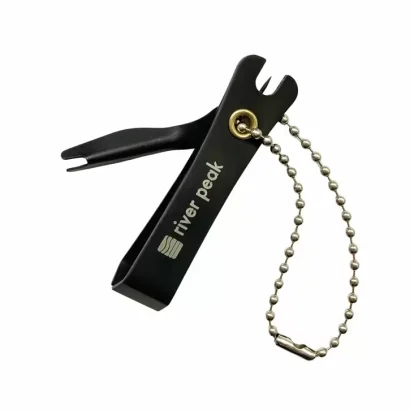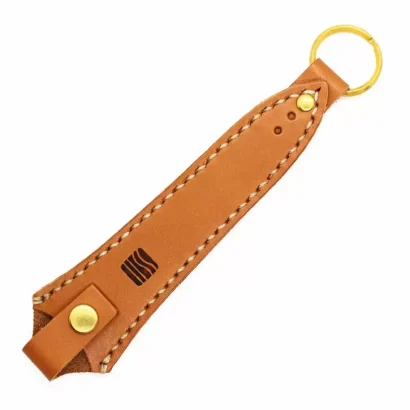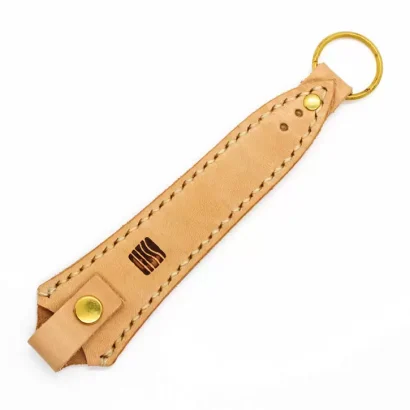Dry Fly Type Loosening Marker
Two-way fishing method that allows you to search both on the surface and underwater at the same time and hit the fish no matter which way they react.
Also works well as a pilot system when you are not sure whether to use a dry fly or a nymph.
#10, #12, #14
Domestic barbless hooks, set of 2
Dry Fly Marker Description.
When fly fishing, especially in early spring, do you ever wonder whether to tie a dry fly or a nymph because you are not sure whether the fish are conscious of the water surface or underwater in the absence of any rises?
We developed this dry fly marker in order to have a fly that can be used for both surface and underwater fishing at the same time.

The main advantage of this dry fly marker is that it allows you to target the surface and underwater at the same time.

The orange post of the marker itself floats on the surface of the water and the body hangs just below the surface.
The fly below floats in the water.
This makes it possible to hook fish on both the surface of the water and in the water, regardless of whether the fish bites on the surface or in the water.
The tying method is exactly the same as for a normal dry fly.
The fly has an eye, so tie it here.

A nylon ring is attached to the tail, and a tippet is tied to this ring.
The tip of the tippet is tied to a fly in the water (e.g., nymph).
Next, I will explain three advantages of this dry fly marker.
Drag Avoidance Underwater Attitude

The dry fly marker is thus pulled by the lead fly below it, so the dry fly marker also becomes semi-submerged.
Compared to a dry fly that floats completely on the surface of the water, it is harder to apply a drag that causes the fly to slide on the surface of the water, and it is easier to drift naturally without being conscious of the drag.
However, this does not mean that you do not need to be aware of the drag at all, or that you do not need to mend the fly at all.
Difficulty in catching drag is a very important factor for dry fly fishing!
High visibility

The marker part is made of large, lightweight urethane foam with a diameter of 8 mm, making the marker highly visible regardless of the situation.
Buoyancy to withstand tungsten flies

The buoyancy is quite high, so even a fly with a large tungsten bead will float sufficiently.
In this picture, a 3.3mm tungsten bead is attached, and it floats well enough.
However, please note that very large beads such as 3.8mm or larger will gradually sink, depending on the current.
Video of hit scenes, etc.
Casting is the same as general luresnning.
If you make a loop like a dry fly, it is easy for the line to tangle, so try to cast as far as possible in a single cast to shake it out.
The casting position is to drop the marker a little upstream of the point where the fish is likely to be, or to drop it into the reeling with pinpoint accuracy if you are aiming to reel in the fish.
The hit scene in the first half of this video is on the lower nymph.
The marker has sunk nicely.
The second half of the hit scene is on the upper fly (dry fly marker).
The pattern on this dry fly marker is not a violent bite that breaks the surface of the water, but a more mature bite that bites just below the surface, probably because the body is completely submerged.
Thus, this was the introduction of the “Dry Fly Marker,” a revolutionary loosening marker that can be used for both surface and underwater fishing at the same time!
Spec
| Model | Size | Packages | Price(dollar) | JAN CODE | Release Date |
|---|---|---|---|---|---|
| RP-DFM10 | #10 | 2pc | 11.00 | 4580516593464 | 2023/8/2 |
| RP-DFM12 | #12 | 2pc | 11.00 | 4580516593471 | 2023/8/2 |
| RP-DFM14 | #14 | 2pc | 11.00 | 4580516593488 | 2023/8/2 |

